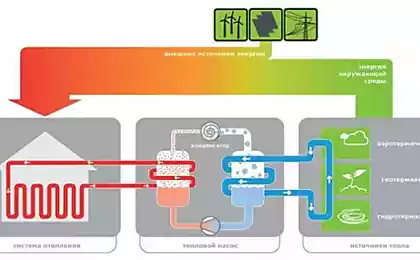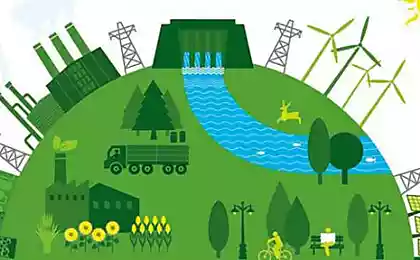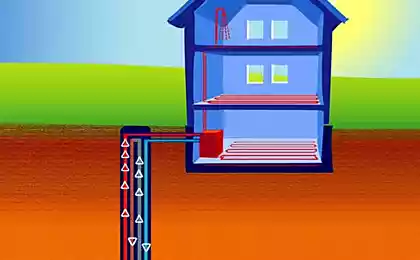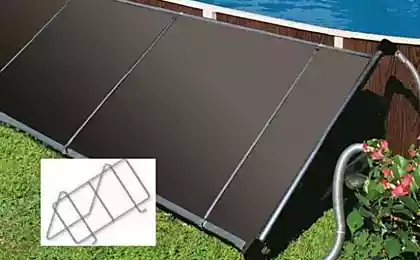492
What are the opportunities of the global geothermal industry?
Geothermal technology can use the energy of the earth's interior. This energy is stable, fully renewable and amenable to audit and control. Today, this industry is slowly but surely developing around the world. In this article, we will acquaint readers to the main theses put forward in the framework of the exhibition Geothermal Energy Expo and annual conference Resources Council Annual Meeting.
Within these major thematic activities of the Council at geothermal resources (GRC) highlighted the current trends in the industry. The speakers argued that the greatest potential for the development of the industry still have the Philippines in Asia, Kenya and Ethiopia in Africa.
However, taking into consideration the latest news from Japan (where allowed drilling in some national parks), you can assume that this country will soon make a breakthrough in the geothermal industry. In addition, the optimistic news coming from Mexico: there came into force the new legislation stimulating the industry.
The GRC Director of external communications Ian Crawford hopes will be adopted legislative acts which will allow to resume work on the lake Salton Sea in southern California. This, according to Crawford, will allow to attract investments to develop more than a gigawatt of geothermal power and will give significant impetus to the entire industry in the United States.
In addition, it is expected that studies conducted in laboratories in the USA, as well as special programs for the study of geothermal energy will make a technological breakthrough that will allow the use of this energy worldwide.
"Certainly there are many unexplored areas, says project Manager for the construction of the Falck Renewables Wind of Paul Gilbert, but in Kenya the potential of geothermal sources is so great that it is theoretically possible to supply power to much of East Africa. In addition, transmission lines for wind power project in lake Turkana are being built in the immediate vicinity of the facility, which will create connection points and build a substation."
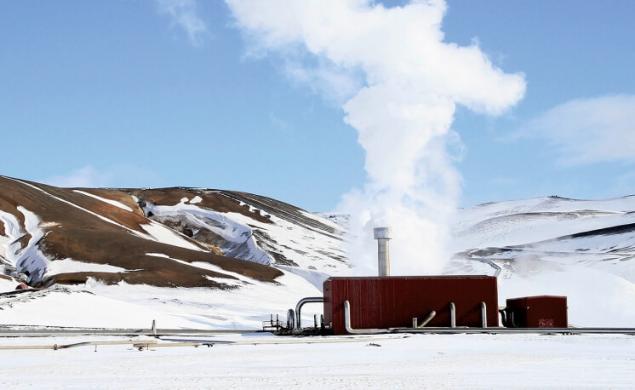
The geothermal resources Council (GRC) highlighted the current trends in the industry. The speakers argued that the greatest potential for the development of the industry still have the Philippines in Asia, Kenya and Ethiopia — in Africa
All these factors should attract third-party companies to participate in the project, which in future will provide Kenya and neighboring countries-five thousand megawatts of power.
The perennial problem of geothermal energy are to confirm the number of energy resources and the justification of risks along with the calculation of profitability of completed construction facility. These issues can decades to restrain the implementation of projects. International Association Sponsor Energy Capital organized by the Fund, designed to facilitate the resolution of such issues that are potentially profitable sites.
The Executive Director of the American Center for sustainable energy (CSE) Len Hayring believes that, despite the prevalence of geothermal sources on the planet, a significant problem is the lack of electrical networks that can transmit generated power at the location of the sources.
With careful analysis of the geothermal zones (for example, those located in the southern United States), we can conclude that the electrical network is either not sufficiently developed or focused on the transmission of energy through stations, which burn hydrocarbons. The improvement of these networks and connect to the new stations end up not in the pocket of developers.
In today's geothermal energy there are two trends that could encourage the growth of ground heat pumps. First, the development of innovative funding schemes geothermal in HVAC will allow people a much greater number of homes to feel comfortable, at the same time saving energy and reducing the cost of service.
New business models allow homeowners to avoid high initial costs for connection to geothermal sources to house the system and to reduce the cost of heating and cooling directly after its installation.
Industry geothermal equipment in terms of financial models follows in the footsteps of the successful "solar" photovoltaic (PV) energy, which shows rapid growth (companies offer customers systems with no pre-payment).
Second, among consumers there is a growing understanding that the geothermal equipment can be used to store thermal energy. The focus is on solar PV station and the redistribution of energy over the network. However, most of this energy is used to create a comfortable environment and water heating.
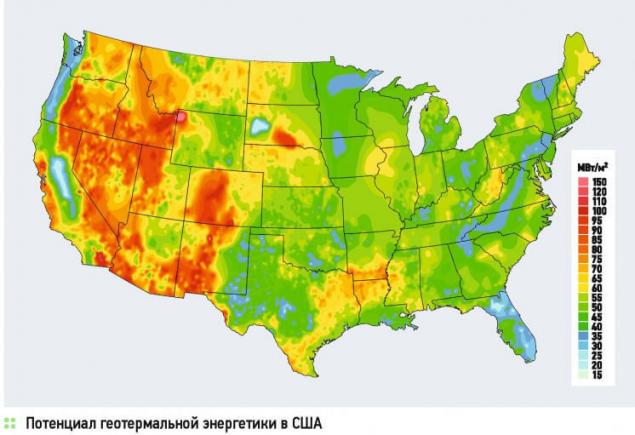
New business models allow homeowners to avoid high initial costs for connection to geothermal sources to house the system and to reduce the cost of heating and cooling directly after installation
To store energy under the ground and as needed to "pump" or "pump" it out — it's a wise way of using electric and thermal energy. In addition, this approach will help utilities to keep up with government programs to reduce malicious emissions from energy production, reducing the overall load on the network.
In California, despite the impressive potential, which contains the soil near the salt lake, Salton Sea, geothermal energy provides only 4% of the energy produced by renewable energy sources in the state. The use of the geothermal potential in the region could replace nuclear capacity shut down in San Onof.
Today, more than 80 countries around the world on one stage or other, work is underway on the development of geothermal resources. Opportunities for the development of this sector on all continents. For development needs: evaluation of geological resources, government support and the demand for energy. Today, all three factors demanded in Africa, namely in Kenya and Ethiopia, as these countries are considered the most promising for geothermal energy development.
High potential exists in Mexico and Indonesia, whose governments support the initiative for the development of geothermal energy technologies and create a favourable climate for investment in this sector. The countries of Central America, the Caribbean and Pacific Islands are also geographically represent maturing market segments geothermal energy. In addition, we should not write off the United States of America. The conditions for the development of the energy market largely dictates the policy of reducing harmful emissions (including greenhouse effect) therefore, geothermal energy, combining the energy and flexibility of the application, relevant today as ever.
The President of the American engineering company Velocity Technology Partners Frank Prout explained that the highest capitalization provide geothermal projects that are near active heat sources in the zones of volcanic and tectonic activity. For example, in the red sea are zones of tectono-magmatic activity with hot springs and fumaroles (cracks on the slopes of craters and volcanoes). These areas of Eritrea, Djibouti, Ethiopia, Yemen and Saudi Arabia.
Installed in the open sea, the system could produce steam which rotates turbine. And the produced direct current can be transferred to shore via a high-voltage cable for storage or immediate use.
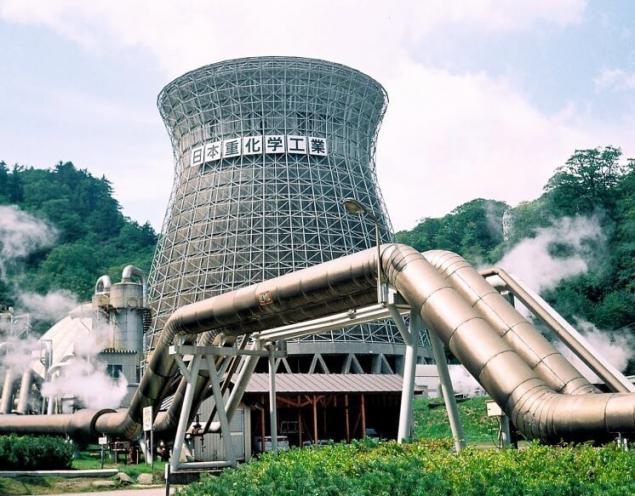
However, such efficiency has its price. Geothermal projects require high-precision studies of the soil and continuous service. In addition, the cost of laying high-voltage transmission lines and construction of energy storage is quite high.
The founder the Internet-resource of the Think GeoEnergy Alexander Ritcher shares his experience: "with regard to geothermal energy, then everyone has their own priorities. Investors and developers are important accessibility and schemes of state support. Providers all depends on the market structure, openness and competitiveness".
"Overall, the key markets the industry: Indonesia, Philippines, Kenya, Turkey, Mexico and some small countries, which are developing small projects. For investors support schemes (such as those that were taken by the authorities in East Africa in the framework of the Geothermal Risk Mitigation Facility, or insurance schemes adopted in Mexico and Latin America along with the best rates) is very useful."
"In this respect Germany offers investors the highest return on investment, despite the small-scale projects and high risk."
To risks that raise questions about the feasibility of developing geothermal resources, include the fact that geothermal plants use natural water reserves due to global climate change in some regions is markedly reduced. Many companies are seeking to use waste water, but, nevertheless, the question of the use of this natural resource in the process of energy generation remains open for discussion.
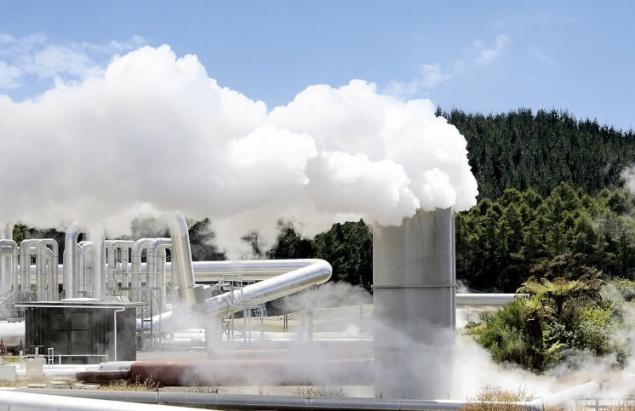
Discussing geothermal energy, it is impossible to ignore ground-source heat pumps (GHP). In the United States annually put into operation about 700 MW of capacity generated by ground heat pumps. This figure is many times greater than the new capacity generated by geothermal rocks. Heat pumps are widely replacing stations operating on fossil fuels, natural gas or propane for the reason that these stations are hazardous and harmful to the environment.
In addition, the installation of a GHP does not require ideal environmental conditions, that is, they can be mounted almost anywhere. This fact makes they very attractive to homeowners. However, the capital costs for the drilling of wells and installation of an underground circuit is still quite large. That is why, despite the fact that their own energy source immediately reduces utility expenses, owners are often not prepared for such financial investments. published
Source: www.c-o-k.ru/articles/kakovy-vozmozhnosti-mirovoy-geotermalnoy-otrasli
Within these major thematic activities of the Council at geothermal resources (GRC) highlighted the current trends in the industry. The speakers argued that the greatest potential for the development of the industry still have the Philippines in Asia, Kenya and Ethiopia in Africa.
However, taking into consideration the latest news from Japan (where allowed drilling in some national parks), you can assume that this country will soon make a breakthrough in the geothermal industry. In addition, the optimistic news coming from Mexico: there came into force the new legislation stimulating the industry.
The GRC Director of external communications Ian Crawford hopes will be adopted legislative acts which will allow to resume work on the lake Salton Sea in southern California. This, according to Crawford, will allow to attract investments to develop more than a gigawatt of geothermal power and will give significant impetus to the entire industry in the United States.
In addition, it is expected that studies conducted in laboratories in the USA, as well as special programs for the study of geothermal energy will make a technological breakthrough that will allow the use of this energy worldwide.
"Certainly there are many unexplored areas, says project Manager for the construction of the Falck Renewables Wind of Paul Gilbert, but in Kenya the potential of geothermal sources is so great that it is theoretically possible to supply power to much of East Africa. In addition, transmission lines for wind power project in lake Turkana are being built in the immediate vicinity of the facility, which will create connection points and build a substation."

The geothermal resources Council (GRC) highlighted the current trends in the industry. The speakers argued that the greatest potential for the development of the industry still have the Philippines in Asia, Kenya and Ethiopia — in Africa
All these factors should attract third-party companies to participate in the project, which in future will provide Kenya and neighboring countries-five thousand megawatts of power.
The perennial problem of geothermal energy are to confirm the number of energy resources and the justification of risks along with the calculation of profitability of completed construction facility. These issues can decades to restrain the implementation of projects. International Association Sponsor Energy Capital organized by the Fund, designed to facilitate the resolution of such issues that are potentially profitable sites.
The Executive Director of the American Center for sustainable energy (CSE) Len Hayring believes that, despite the prevalence of geothermal sources on the planet, a significant problem is the lack of electrical networks that can transmit generated power at the location of the sources.
With careful analysis of the geothermal zones (for example, those located in the southern United States), we can conclude that the electrical network is either not sufficiently developed or focused on the transmission of energy through stations, which burn hydrocarbons. The improvement of these networks and connect to the new stations end up not in the pocket of developers.
In today's geothermal energy there are two trends that could encourage the growth of ground heat pumps. First, the development of innovative funding schemes geothermal in HVAC will allow people a much greater number of homes to feel comfortable, at the same time saving energy and reducing the cost of service.
New business models allow homeowners to avoid high initial costs for connection to geothermal sources to house the system and to reduce the cost of heating and cooling directly after its installation.
Industry geothermal equipment in terms of financial models follows in the footsteps of the successful "solar" photovoltaic (PV) energy, which shows rapid growth (companies offer customers systems with no pre-payment).
Second, among consumers there is a growing understanding that the geothermal equipment can be used to store thermal energy. The focus is on solar PV station and the redistribution of energy over the network. However, most of this energy is used to create a comfortable environment and water heating.

New business models allow homeowners to avoid high initial costs for connection to geothermal sources to house the system and to reduce the cost of heating and cooling directly after installation
To store energy under the ground and as needed to "pump" or "pump" it out — it's a wise way of using electric and thermal energy. In addition, this approach will help utilities to keep up with government programs to reduce malicious emissions from energy production, reducing the overall load on the network.
In California, despite the impressive potential, which contains the soil near the salt lake, Salton Sea, geothermal energy provides only 4% of the energy produced by renewable energy sources in the state. The use of the geothermal potential in the region could replace nuclear capacity shut down in San Onof.
Today, more than 80 countries around the world on one stage or other, work is underway on the development of geothermal resources. Opportunities for the development of this sector on all continents. For development needs: evaluation of geological resources, government support and the demand for energy. Today, all three factors demanded in Africa, namely in Kenya and Ethiopia, as these countries are considered the most promising for geothermal energy development.
High potential exists in Mexico and Indonesia, whose governments support the initiative for the development of geothermal energy technologies and create a favourable climate for investment in this sector. The countries of Central America, the Caribbean and Pacific Islands are also geographically represent maturing market segments geothermal energy. In addition, we should not write off the United States of America. The conditions for the development of the energy market largely dictates the policy of reducing harmful emissions (including greenhouse effect) therefore, geothermal energy, combining the energy and flexibility of the application, relevant today as ever.
The President of the American engineering company Velocity Technology Partners Frank Prout explained that the highest capitalization provide geothermal projects that are near active heat sources in the zones of volcanic and tectonic activity. For example, in the red sea are zones of tectono-magmatic activity with hot springs and fumaroles (cracks on the slopes of craters and volcanoes). These areas of Eritrea, Djibouti, Ethiopia, Yemen and Saudi Arabia.
Installed in the open sea, the system could produce steam which rotates turbine. And the produced direct current can be transferred to shore via a high-voltage cable for storage or immediate use.

However, such efficiency has its price. Geothermal projects require high-precision studies of the soil and continuous service. In addition, the cost of laying high-voltage transmission lines and construction of energy storage is quite high.
The founder the Internet-resource of the Think GeoEnergy Alexander Ritcher shares his experience: "with regard to geothermal energy, then everyone has their own priorities. Investors and developers are important accessibility and schemes of state support. Providers all depends on the market structure, openness and competitiveness".
"Overall, the key markets the industry: Indonesia, Philippines, Kenya, Turkey, Mexico and some small countries, which are developing small projects. For investors support schemes (such as those that were taken by the authorities in East Africa in the framework of the Geothermal Risk Mitigation Facility, or insurance schemes adopted in Mexico and Latin America along with the best rates) is very useful."
"In this respect Germany offers investors the highest return on investment, despite the small-scale projects and high risk."
To risks that raise questions about the feasibility of developing geothermal resources, include the fact that geothermal plants use natural water reserves due to global climate change in some regions is markedly reduced. Many companies are seeking to use waste water, but, nevertheless, the question of the use of this natural resource in the process of energy generation remains open for discussion.

Discussing geothermal energy, it is impossible to ignore ground-source heat pumps (GHP). In the United States annually put into operation about 700 MW of capacity generated by ground heat pumps. This figure is many times greater than the new capacity generated by geothermal rocks. Heat pumps are widely replacing stations operating on fossil fuels, natural gas or propane for the reason that these stations are hazardous and harmful to the environment.
In addition, the installation of a GHP does not require ideal environmental conditions, that is, they can be mounted almost anywhere. This fact makes they very attractive to homeowners. However, the capital costs for the drilling of wells and installation of an underground circuit is still quite large. That is why, despite the fact that their own energy source immediately reduces utility expenses, owners are often not prepared for such financial investments. published
Source: www.c-o-k.ru/articles/kakovy-vozmozhnosti-mirovoy-geotermalnoy-otrasli
The architects presented an ambitious plan for the reconstruction of the industrial area of Brussels
Created the first transparent OLED display with graphene electrodes




